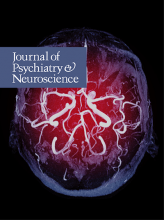Article Figures & Tables
Tables
- Table 1
Most frequently used drugs described as a potential cause of oculogyric crisis (1)
Antipsychotics All, both typical and atypical can induce dystonia, hence OGC Antiemetics Metoclopramide, clebopride, ondansetron, and droperido Antiepileptics Carbamazepine, lamotrigine, gabapentin, and oxcarbazepine8 Antidepressants SSRI: fluoxetine, citalopram, fluvoxamine, escitalopram Tricyclic: imipramine Other Cetirizine, organophosphate poisoning, tetrabenazine, L-dopa, lithium, edrophonium, cefexime, pentazocine, nifedipine, isotretinoin, phencyclidine, and salicylate poisoning OGC = oculogyric crisis; SSRI = selective serotonin reuptake inhibitor.






